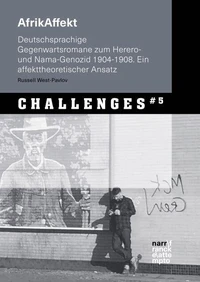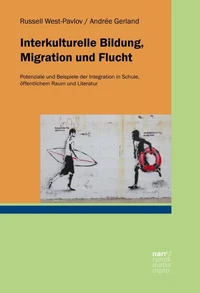Heterotropic Theatres. Shakespeare and After
Par :Formats :
Disponible dans votre compte client Decitre ou Furet du Nord dès validation de votre commande. Le format ePub est :
- Compatible avec une lecture sur My Vivlio (smartphone, tablette, ordinateur)
- Compatible avec une lecture sur liseuses Vivlio
- Pour les liseuses autres que Vivlio, vous devez utiliser le logiciel Adobe Digital Edition. Non compatible avec la lecture sur les liseuses Kindle, Remarkable et Sony
 , qui est-ce ?
, qui est-ce ?Notre partenaire de plateforme de lecture numérique où vous retrouverez l'ensemble de vos ebooks gratuitement
Pour en savoir plus sur nos ebooks, consultez notre aide en ligne ici
- Nombre de pages396
- FormatePub
- ISBN978-3-381-13323-9
- EAN9783381133239
- Date de parution26/05/2025
- Protection num.Digital Watermarking
- Taille2 Mo
- Infos supplémentairesepub
- ÉditeurNarr Francke Attempto Verlag
Résumé
This book seeks to elaborate a theory of 'troping' that expands thepurview of linguistic work and agency, parsing its transformative work beyond the limits usually set by theories of language. It registers a sea-change in the theorization of theatrical art from representation to intervention. The book thereby seeks to lay bare the activity of language as a heterotropology. It focuses on early modern theatre from Shakespeare (Hamlet, Macbeth, Romeo and Juliet, Troilus and Cressida) and other theatrical forms of the same era (the Court Masque, dramas by Ford or Johnson) through to the Restoration; it also reads a number of contemporary avatars of Shakespearean texts from Stoppard to Jones, and of early modern and postmodern performance spaces such as the New Globe Theatre.
In a dozen readings of early modern theatre it asks how the remarkable energy and social purchase ascribed to theatrical language by contemporary commentators can be reconceptualized, mobilized anew and thus harnessed for our own turbulent times.
In a dozen readings of early modern theatre it asks how the remarkable energy and social purchase ascribed to theatrical language by contemporary commentators can be reconceptualized, mobilized anew and thus harnessed for our own turbulent times.
This book seeks to elaborate a theory of 'troping' that expands thepurview of linguistic work and agency, parsing its transformative work beyond the limits usually set by theories of language. It registers a sea-change in the theorization of theatrical art from representation to intervention. The book thereby seeks to lay bare the activity of language as a heterotropology. It focuses on early modern theatre from Shakespeare (Hamlet, Macbeth, Romeo and Juliet, Troilus and Cressida) and other theatrical forms of the same era (the Court Masque, dramas by Ford or Johnson) through to the Restoration; it also reads a number of contemporary avatars of Shakespearean texts from Stoppard to Jones, and of early modern and postmodern performance spaces such as the New Globe Theatre.
In a dozen readings of early modern theatre it asks how the remarkable energy and social purchase ascribed to theatrical language by contemporary commentators can be reconceptualized, mobilized anew and thus harnessed for our own turbulent times.
In a dozen readings of early modern theatre it asks how the remarkable energy and social purchase ascribed to theatrical language by contemporary commentators can be reconceptualized, mobilized anew and thus harnessed for our own turbulent times.





